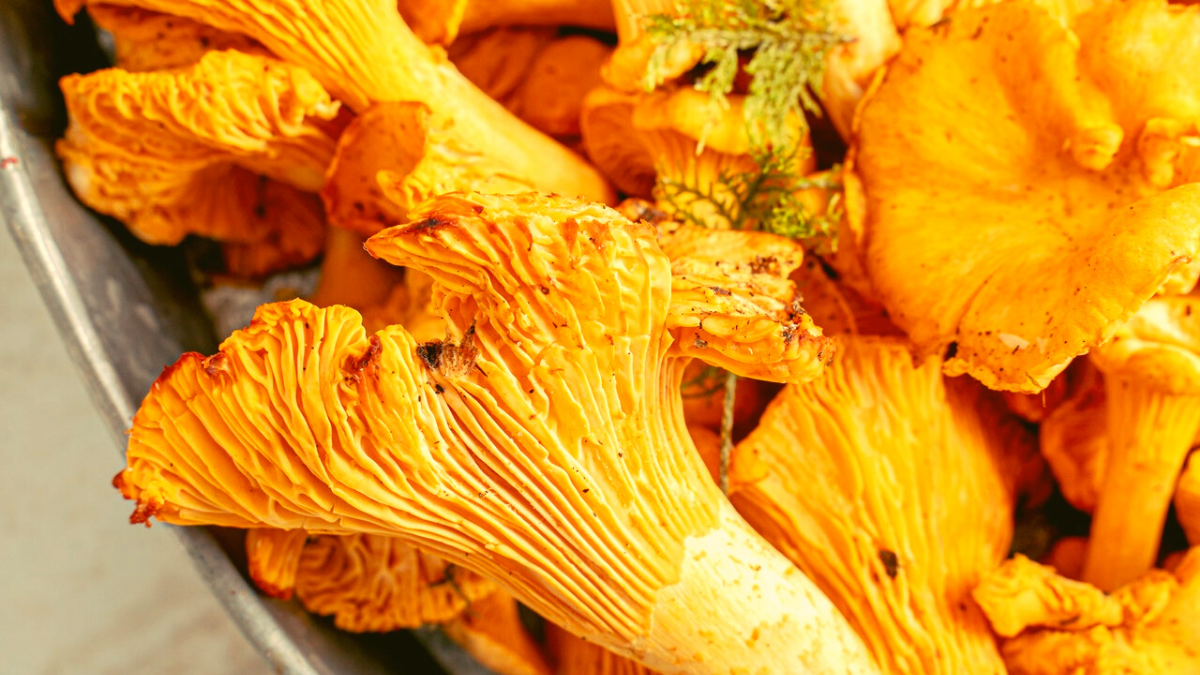Each year during the autumn and winter months, Blue Ridge, Georgia becomes one of the most sought-after destinations to visit, especially for the spectacular fall foliage and holiday activities that take place in town.
While folks love taking self-guided drives and hikes among the mountains during this time of year, a growing number of visitors and locals have taken to mushroom picking in the vast expanse of National Forest Territory, which can be found just a few minutes from the Downtown District. Though it may seem a bit odd to some, the truth is that finding wild mushrooms in Blue Ridge can be quite the adventure, and they taste good to boot!
So grab your magnifying glass, slip on your favorite hiking boots and go for a journey in nature! Before you head out, here is some information and pointers to get you started:
EQUIPMENT NEEDED
IMPORTANT - A mushroom identification guide is crucial to have with you, so that you know for sure that the mushrooms you are picking are edible. There are several books that you can buy, like the National Audubon Society Field Guide to North American Mushrooms. If you'd rather download an app on your mobile device, try the Rogers Mushroom App for iOS or Android. You can also check mushroom picking forums, like those found on Reddit or you can visit a mycological identification site.
A large basket to hold the mushrooms that you find
A pocket knife to remove the mushrooms from the ground
PICKING YOUR MUSHROOMS
Carefully dig out the entire mushroom, including the stem. Try not to damage the mushroom, as there are characteristics on the stem and the cap that can help you identify it.
Make a note of where you found the mushroom, and the habitat that it is in. Did you find the mushroom growing in grass? Was it underneath a tree? Was it growing in a circle of mushrooms? Answering these questions will help you identify them!
Pay close attention to what features are on the mushroom. Does it have gills? Does it have tubes, or "teeth"? Is the outer side smooth or veined?
How does the mushroom smell, and whether or not it changes color if bruised. This will also help with identification.
Roll up each individual specimen in wax paper and place in your basket.
Reference your identification book or app to discover what you've found.
TIPS AND SAFETY
DO NOT taste the mushrooms that you find. Make sure you identify them first.
Bring along an experienced mushroom picker, if possible.
Once you know for sure that your mushrooms are edible, try to eat them the same day that you pick them.
Avoid mushrooms with white gills, a ring around the stem or a mushroom that has a red cap or stem. These mushrooms have a higher chance of being poisonous.
MOST POPULAR NORTH GEORGIA MUSHROOM VARIETIES AND HOW TO EAT THEM
Chanterelle (Cantharellus Cibarius) - These mushrooms are often yellow like an egg yolk, and are commonly referred to as Golden Chanterelles. The caps of these mushrooms are domed and the edges of the cap curl underneath it. These mushrooms are known to smell like apricots. Try pan frying your Chanterelles in a dry pan to get out he excess moisture, then add some garlic and your favorite broth, which the mushroom will absorb. Serve the mushrooms on top of a nice, juicy steak.
Porcini (Boletus Edulis) - Porcini mushrooms are light brown or chestnut in color, have a smooth cap and have firm flesh. These mushrooms usually grow in the forest beneath spruce trees through November. Try chopping up your Porcinis and adding them to a fresh salad. The mushrooms will add another layer of texture and flavor to your greens.
Bay Bolete (Boletus Badius or Xerocomus Badius) - These yummy mushrooms are brown in color, with a spherical cap and cylindrical stem. You will probably find yellow pores underneath the cap. Find the Bay Bolete in the woods on the ground under decaying trees. DO NOT eat this mushroom raw - try cooking it in a delicious stir-fry or adding it to your favorite pasta sauce.
